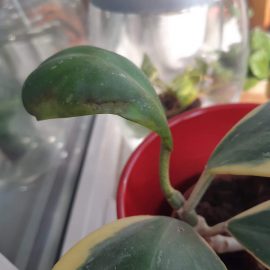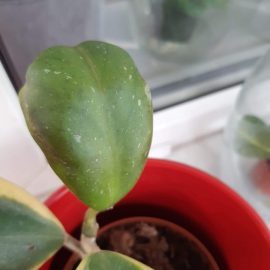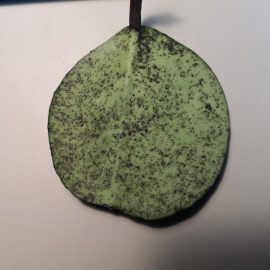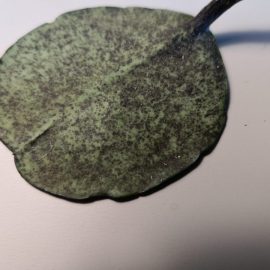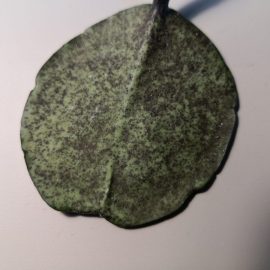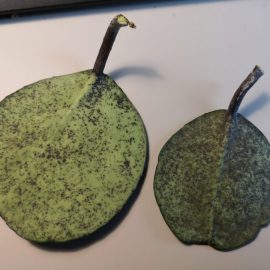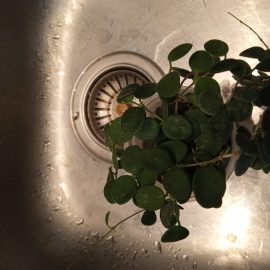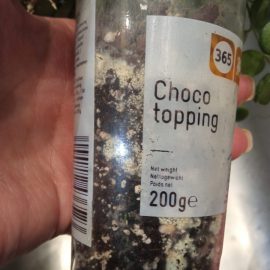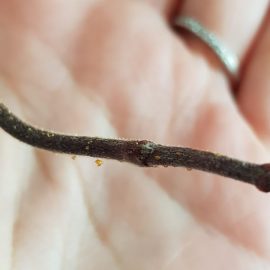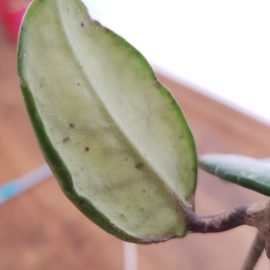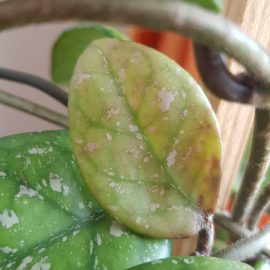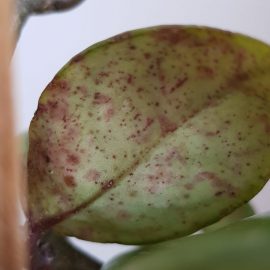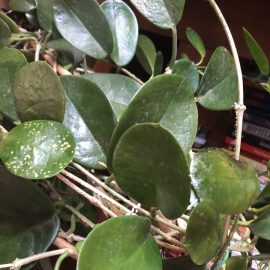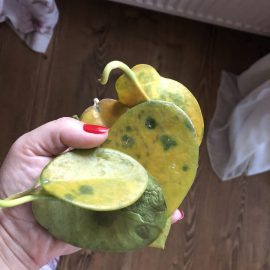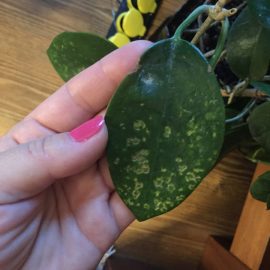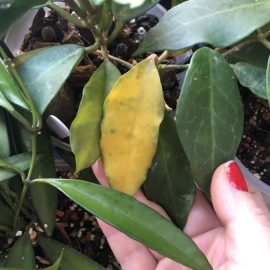Hoya, plant care and growing guide
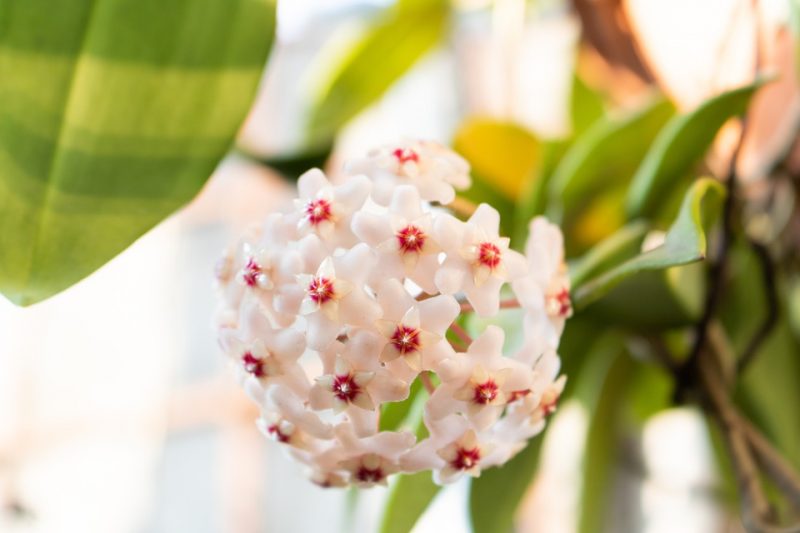
Hoya is a genus of tropical plants, comprising about 200-300 species native to Asia, Indonesia, and Australia. They are perennial, evergreen, climbing, or sometimes bushy-looking plants. It is often grown as a decorative plant, in pots, which can reach a height of 2 meters. The leaves are simple, whole, fleshy, and can have different shapes, depending on the species. They can also have a smooth surface or be covered with fuzz. Some species have leaves with spots or silver ribs. The flowers appear between June and October and are clustered in inflorescences called umbels. The petals are star-shaped, their color varies from milky white to pink, blood-red, yellow, etc. Like the leaves, the flowers vary from one species to another and can have different textures (glossy, matte, with fuzz).
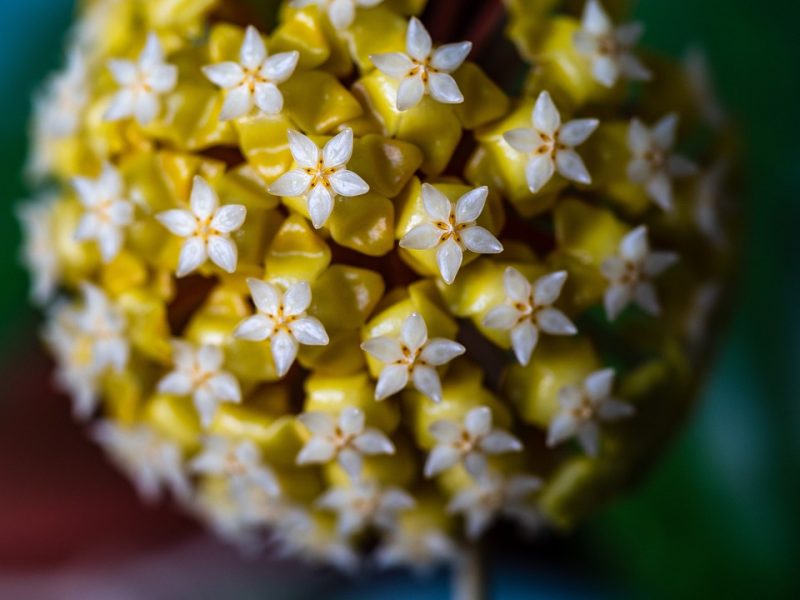
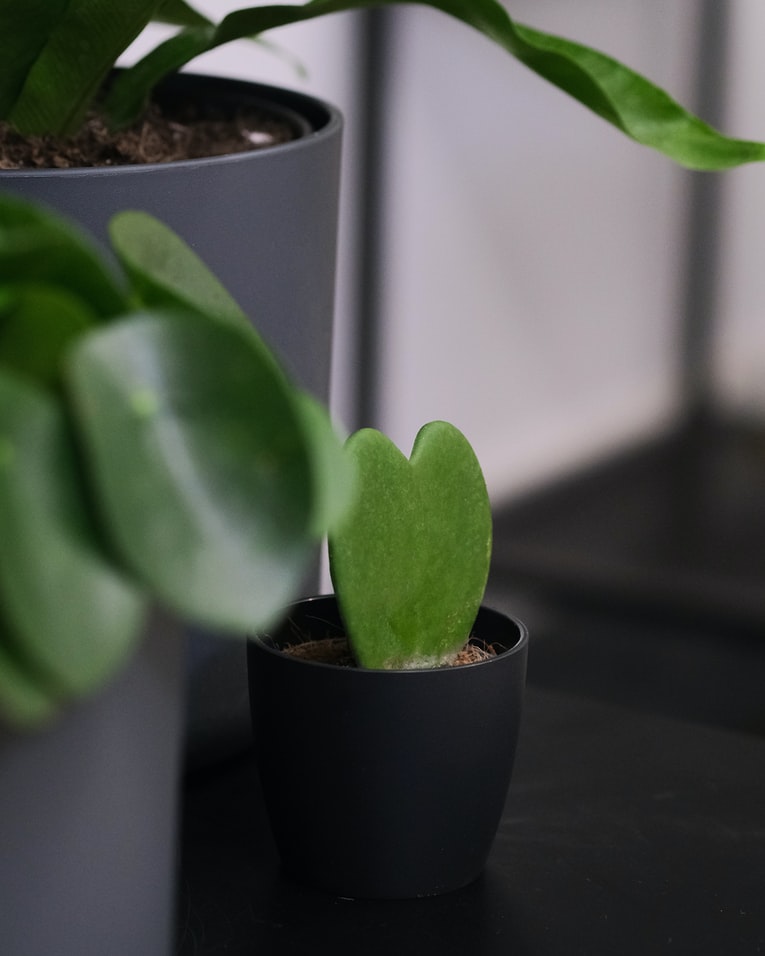
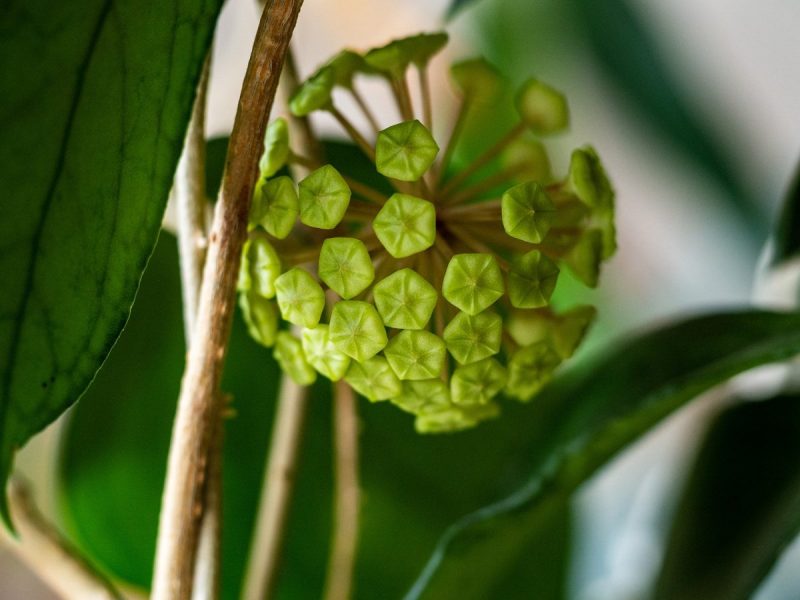
Species and varieties. Hoya carnosa is the most common species, it has large, oval, fleshy leaves with a glossy surface. The flowers are ivory, with pink stamens, strongly fragrant.
Hoya bella has thin stems, to which the inflorescences that are made up of dozens of white flowers with red stamens, are attached.
Hoya multiflora has oval leaves and yellow-green flowers with red stamens.
Hoya kerrii is distinguished through its heart-shaped leaves.
Light. Hoya prefers bright rooms because it needs light to bloom, but they should not be placed in direct sunlight.
Temperature. It should not be higher than 27° C during the hot months. In winter, the Hoya can be placed in a cooler room, with temperatures between 12 and 16° C. During the summer months, it is recommended to spray the leaves with non-calcareous water, twice a week. It is not advisable to spray the flowers with water.
Substrate. Hoya needs a light substrate that drains water well to prevent root suffocation. It can be made of soil for Ericaceae and gravel. To improve drainage, it is recommended to choose a substrate with added sand or perlite.
Recommended products
-
You can find products on a different store
Change Store -
You can find products on a different store
Change Store -
You can find products on a different store
Change Store -
You can find products on a different store
Change Store -
You can find products on a different store
Change Store -
You can find products on a different store
Change Store -
You can find products on a different store
Change Store -
You can find products on a different store
Change Store -
You can find products on a different store
Change Store -
You can find products on a different store
Change Store -
You can find products on a different store
Change Store -
You can find products on a different store
Change Store -
You can find products on a different store
Change Store -
You can find products on a different store
Change Store -
You can find products on a different store
Change Store -
You can find products on a different store
Change Store -
You can find products on a different store
Change Store -
You can find products on a different store
Change Store -
You can find products on a different store
Change Store -
You can find products on a different store
Change Store -
You can find products on a different store
Change Store -
You can find products on a different store
Change Store -
You can find products on a different store
Change Store -
You can find products on a different store
Change Store
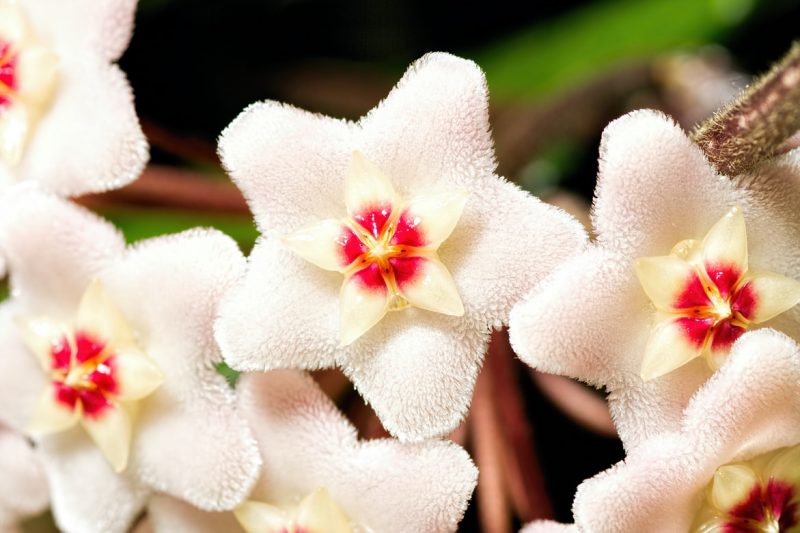
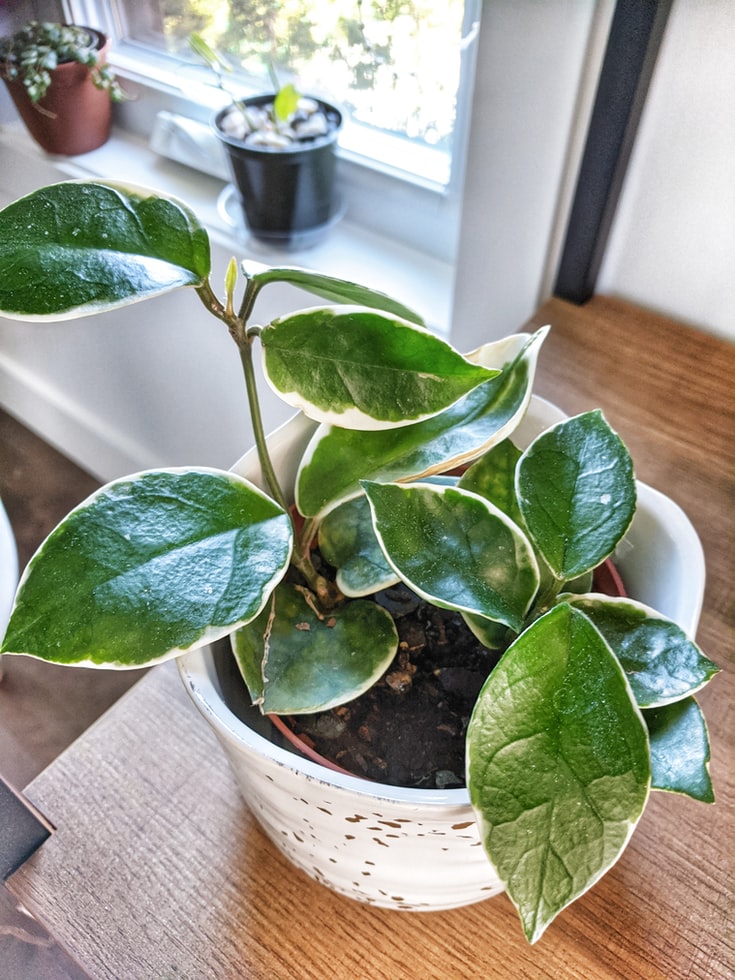
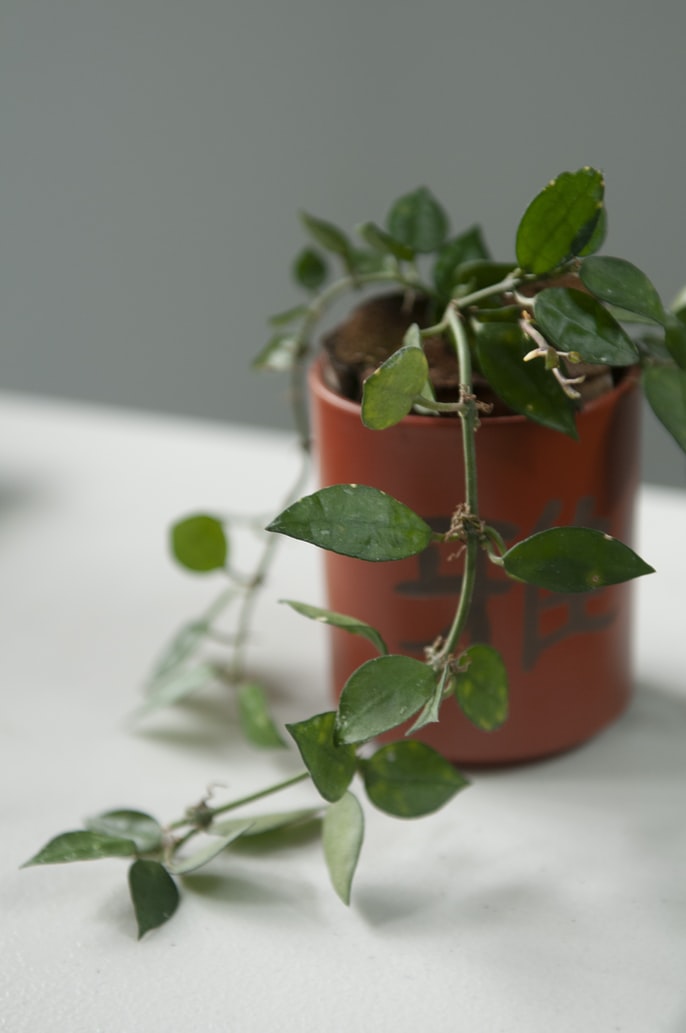
Care. Watering should be done when the substrate is dry on the surface. It is recommended to water the plant in the morning so that the water can be absorbed during the day. Use softened water, previously left for 2-3 days in an open vessel, at room temperature, because Hoya is sensitive to the chlorine and fluoride salts in the water. In winter, when the plant goes into dormancy, the amount of water and the frequency of watering should decrease.
Fertilization. From April to September, during the period of active growth and flowering, it is recommended to administer a special fertilizer for flowering plants. It is recommended that the fertilizer should not be administered on the dry substrate, because there is a risk of burning the roots, so apply it after watering the plant.
Recommended products
-
You can find products on a different store
Change Store -
You can find products on a different store
Change Store -
You can find products on a different store
Change Store -
You can find products on a different store
Change Store -
You can find products on a different store
Change Store -
You can find products on a different store
Change Store -
You can find products on a different store
Change Store -
You can find products on a different store
Change Store -
You can find products on a different store
Change Store -
You can find products on a different store
Change Store -
You can find products on a different store
Change Store -
You can find products on a different store
Change Store -
You can find products on a different store
Change Store -
You can find products on a different store
Change Store -
You can find products on a different store
Change Store -
You can find products on a different store
Change Store -
You can find products on a different store
Change Store -
You can find products on a different store
Change Store -
You can find products on a different store
Change Store -
You can find products on a different store
Change Store -
You can find products on a different store
Change Store -
You can find products on a different store
Change Store -
You can find products on a different store
Change Store -
You can find products on a different store
Change Store
Transplanting. It should be done only when the roots of the plant have filled the pot, once every 2-3 years, in April.
Pruning. After flowering, Hoya can be cut to adjust the bush, but the branches that have bloomed should not be cut, because they will produce flowers in the next year.
Propagation. Propagation can be done through stem cuttings with a length of 10 cm, removed in spring or summer. They have to be rooted in a mixture of sand and peat, in a warm place.
Recommended products
-
You can find products on a different store
Change Store -
You can find products on a different store
Change Store -
You can find products on a different store
Change Store -
You can find products on a different store
Change Store -
You can find products on a different store
Change Store -
You can find products on a different store
Change Store -
You can find products on a different store
Change Store -
You can find products on a different store
Change Store -
You can find products on a different store
Change Store -
You can find products on a different store
Change Store -
You can find products on a different store
Change Store -
You can find products on a different store
Change Store -
You can find products on a different store
Change Store -
You can find products on a different store
Change Store -
You can find products on a different store
Change Store -
You can find products on a different store
Change Store -
You can find products on a different store
Change Store -
You can find products on a different store
Change Store -
You can find products on a different store
Change Store -
You can find products on a different store
Change Store -
You can find products on a different store
Change Store -
You can find products on a different store
Change Store -
You can find products on a different store
Change Store -
You can find products on a different store
Change Store
In addition:
- sometimes, woolly apple aphids can infest the plant, which can be controlled with specific insecticides.
- the flowers appear when the stems reach a minimum length of 30 cm.
- Hoya has a longevity of 2-8 years.
- the brown spots that may appear on the leaves are due to prolonged exposure to the sun.
- after the appearance of the flower buds, the plant should not be moved to another place.
- although it should not be placed in direct sunlight, Hoya does not bloom if it does not have enough light.














































































































































































































































































































































































































































